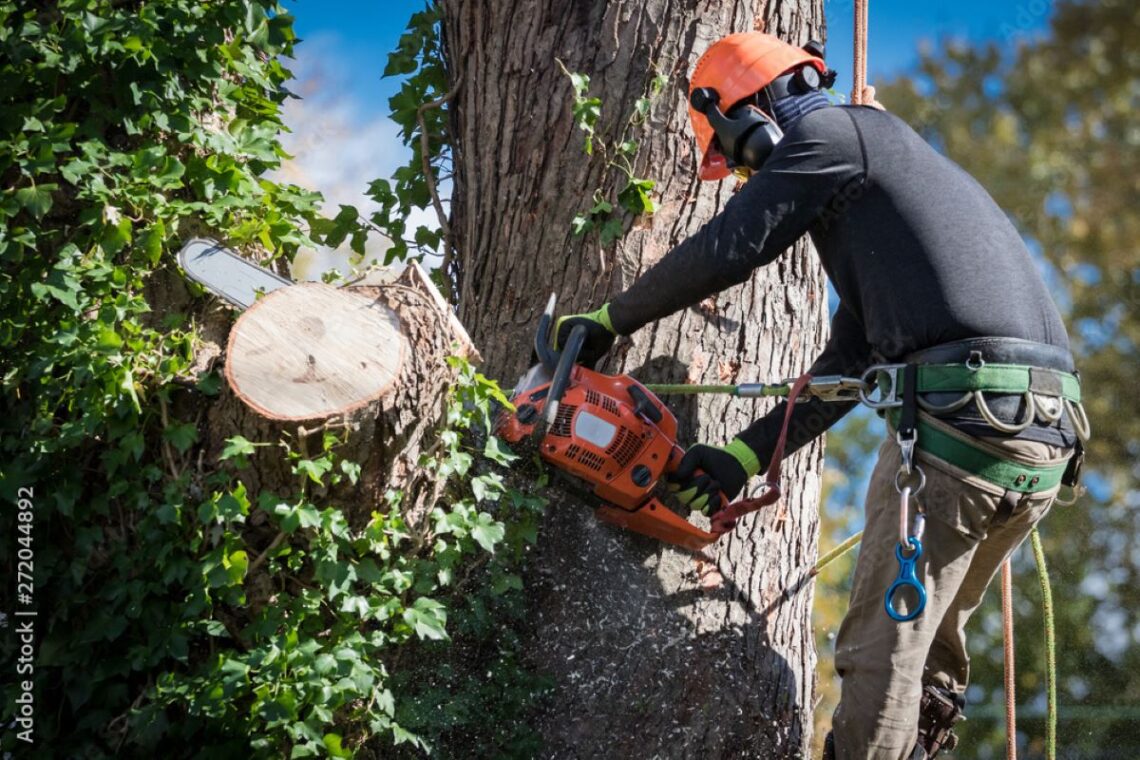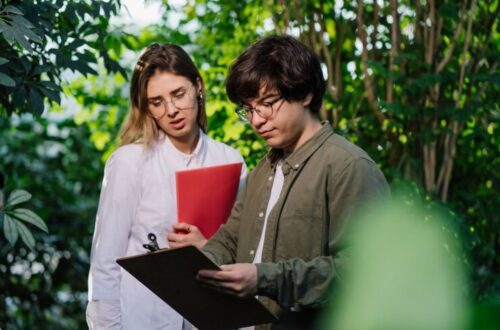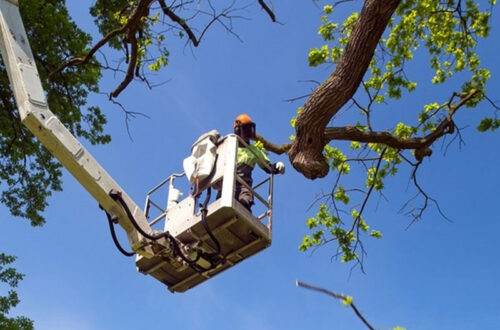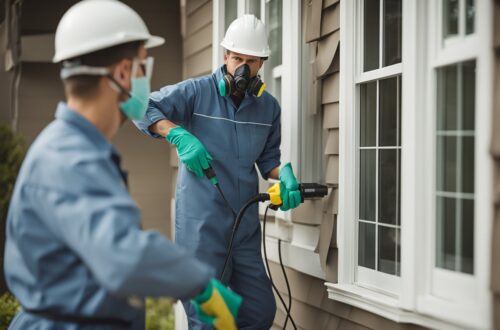What Is a Professional Tree Removal Assessment and Why Is It Important?
A professional tree removal assessment in Cheltenham is a thorough evaluation carried out by certified arborists to determine if a tree needs to be removed. The assessment looks at the tree’s health, structural stability, location, and potential dangers to people and property.
Certified arborists have specific training and expertise that they bring to the evaluation process. They have qualifications that allow them to spot subtle signs of disease, decay, and structural weakness that untrained observers might overlook. Their professional judgment ensures that decisions are based on scientific evidence rather than guesswork.
Expert evaluation serves three critical purposes:
- Safety: Identifies dangerous trees before they cause injury or property damage
- Legal compliance: Ensures removal follows Tree Preservation Orders and conservation area restrictions
- Cost-effectiveness: Prevents unnecessary removal of trees that could be saved through alternative treatments
The assessment gives property owners documented evidence supporting their tree management decisions, protecting them from potential legal challenges while also being environmentally responsible.
How Do Arborists Evaluate the Health and Condition of a Tree?
What methods do professionals use to assess tree health without climbing?
Visual Tree Assessment (VTA) forms the foundation of professional tree health evaluation in Cheltenham. Arborists conduct systematic inspections from ground level, examining the tree’s overall structure, bark condition, leaf density, and any visible signs of disease or decay. This non-invasive technique allows experts to identify physiological problems and structural weaknesses that might compromise the tree’s stability.
What equipment helps arborists gather accurate data?
Professional tree health evaluation tools provide precise measurements and detailed insights during assessments:
- Laser height measurers calculate exact tree dimensions and crown spread
- Binoculars enable close examination of upper branches and canopy areas
- Sounding hammers detect internal decay by producing distinct acoustic responses when tapped against the trunk
- Probes investigate suspicious areas where rot or cavities may exist beneath the bark surface
These specialized instruments help arborists determine the tree’s age classification, structural integrity, and extent of any deterioration. The combination of visual inspection techniques and diagnostic tools creates a comprehensive picture of the tree’s current condition, allowing professionals to make informed recommendations about whether removal, treatment, or monitoring is the most appropriate course of action.
What Safety Risks Do Arborists Look for During the Assessment?
Arborists prioritise identifying tree safety hazards Cheltenham residents and properties may face from compromised trees. The assessment focuses on spotting structural weaknesses that could lead to falling branches, limb failure, or complete tree collapse during storms or high winds.
Risk identification tree removal specialists examine several critical danger zones:
- Weak or dead branches hanging over homes, driveways, or public footpaths that could break without warning
- Root instability caused by soil erosion, construction damage, or fungal decay that undermines the tree’s anchoring system
- Trunk cavities and decay where internal rot has hollowed out structural wood, reducing load-bearing capacity
- Cracks and splits in major limbs or the main trunk indicating imminent failure points
- Leaning trees, which are a significant risk as they often have exposed root plates suggesting the tree is pulling away from the ground. Understanding these leaning tree hazards is crucial for safety.
- Crown imbalance where uneven weight distribution creates stress on one side of the tree
- Proximity hazards such as trees growing too close to power lines, buildings, or boundary fences
Diseased trees often show reduced structural integrity through brittle wood, fungal growth, or pest infestation. Arborists assess whether these conditions pose immediate danger requiring urgent removal or if monitoring and maintenance can manage the risk safely.
How Do Local Regulations Affect Tree Removal Decisions?
Can you simply remove any tree on your property in Cheltenham? Not necessarily—local legal protections often determine whether removal is permitted. Tree Preservation Orders Cheltenham and conservation area tree regulations form the backbone of these restrictions, requiring property owners to seek approval before undertaking any work.
Tree Preservation Orders (TPOs)
Tree Preservation Orders (TPOs) protect specific trees or groups of trees deemed valuable to the local environment and community. If your tree has a TPO, you must apply to Cheltenham Borough Council for consent before removal, pruning, or any other work. Unauthorised removal can result in substantial fines and legal consequences.
Conservation Areas
Properties within conservation areas face additional scrutiny. Even without a TPO, trees exceeding certain size thresholds require six weeks’ notice to the council before removal. This notification period allows authorities to assess whether the tree warrants protection.
During a professional tree removal assessment in Cheltenham, arborists check planning records and conservation designations as standard practice. They identify any legal restrictions early in the process, advising whether formal applications are necessary.
The assessment report includes:
- Confirmation of TPO or conservation area status
- Required permissions and application procedures
- Timeline implications for regulatory approval
- Alternative solutions if removal is restricted
Arborists often assist with the application process, providing technical evidence to support removal requests when trees pose genuine safety risks or have deteriorated beyond recovery.
What Information Is Included in the Arborist’s Report?
A comprehensive tree removal report Cheltenham provides detailed documentation of every aspect of the assessment. The report serves as both a record of findings and a roadmap for any necessary action.
The arborist findings documentation typically contains:
- Tree identification details including species, approximate age classification, and precise location on your property
- Physical measurements such as height, trunk diameter, and crown spread recorded during the visual inspection
- Health status evaluation describing the physiological condition, signs of disease, pest infestation, or decay
- Structural assessment noting any defects, cavities, weak branch unions, or root instability
- Risk analysis identifying specific hazards the tree poses to people, buildings, or neighbouring properties
- Photographic evidence showing key areas of concern from multiple angles
- Regulatory considerations confirming whether Tree Preservation Orders or conservation area restrictions apply
- Recommended actions with clear explanations of whether removal, pruning, or monitoring is most appropriate
- Work schedule outlining the proposed timeline and methodology if intervention is required
Professional arborists ensure their reports meet industry standards and provide sufficient detail for insurance purposes or planning applications. The documentation creates a transparent record that protects both property owners and the environment.
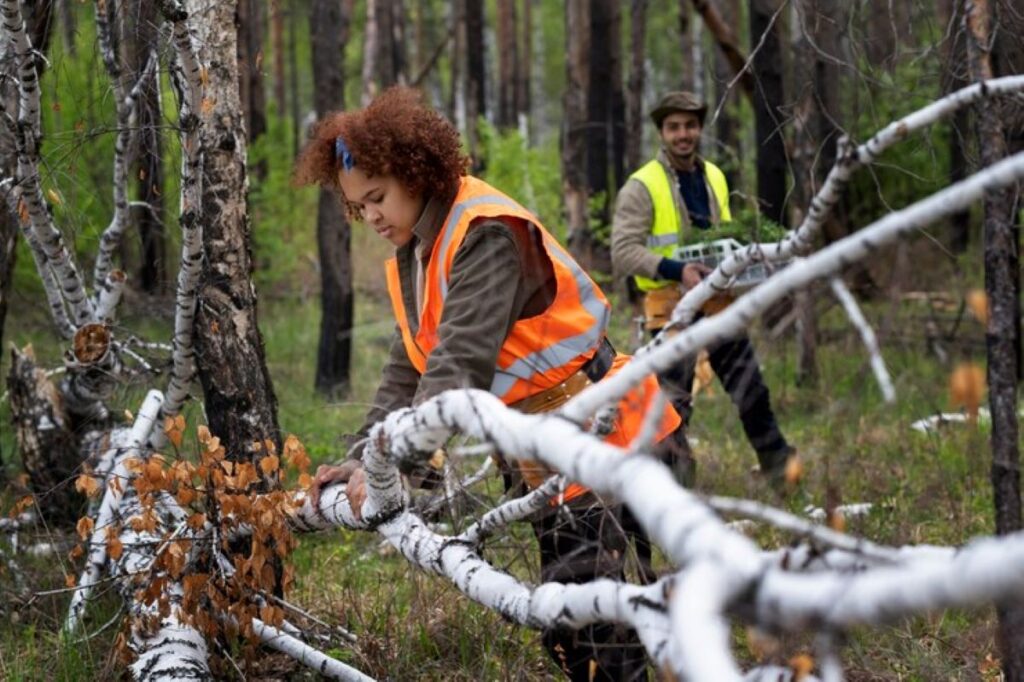
How Is Safety Ensured During the Actual Tree Removal Process?
Professional tree surgeons, often trained through specialized programs like the Arbor Technician Course, follow strict safety protocols during every stage of tree removal. These measures protect both the workers and nearby property from potential dangers.
Before Cutting Begins
Before any cutting starts, the team sets up exclusion zones around the work area to prevent unauthorised access.
Safety Gear for Workers
Workers wear full personal protective equipment including helmets, eye protection, chainsaw-resistant clothing, and safety harnesses when working at height.
Communication Between Team Members
Ground staff maintain constant communication with climbers using radio systems or hand signals.
Key safety measures during safe tree removal Cheltenham operations include:
- Systematic dismantling from top to bottom using controlled rigging techniques
- Securing heavy branches with ropes and lowering devices before cutting
- Strategic placement of equipment to prevent property damage
- Continuous monitoring of weather conditions and wind speeds
- Emergency response plans for unexpected situations
Arborist safety protocols require regular equipment inspections and maintenance checks. Chainsaws, ropes, and climbing gear undergo thorough examination before each job. The team assesses potential drop zones and positions vehicles to protect buildings, fences, and landscaping features.
Traffic management becomes essential when trees stand near roads. Professionals coordinate with local authorities to implement temporary road closures or diversions when necessary. This systematic approach minimises risks whilst ensuring efficient completion of removal work.
Are There Additional Services Offered Alongside Tree Removal?
Professional arborists in Cheltenham typically provide stump grinding Cheltenham services immediately after tree removal to complete the job thoroughly. The stump left behind can become a breeding ground for pests, create tripping hazards, and detract from your property’s appearance.
Stump grinding involves using specialised machinery to grind the remaining stump several inches below ground level, turning it into wood chips. This process prevents unwanted regrowth from the root system and allows you to reclaim the space for landscaping, paving, or new plantings. The wood chips produced can be used as mulch in your garden or removed entirely, depending on your preference.
Beyond stump grinding, post-tree removal services often include:
- Site clearance and debris removal to leave your property clean and tidy
- Root barrier installation to prevent future issues with neighbouring trees
- Soil remediation to prepare the ground for replanting
- Wood chipping services where removed timber is processed into usable mulch
Many arborists offer package deals that bundle tree removal with these complementary services, providing better value and ensuring the entire job is completed by experienced professionals. Understanding what happens during a professional tree removal assessment in Cheltenham includes knowing these additional options exist to fully restore your outdoor space after a tree is removed.
What Alternatives to Tree Removal Might an Arborist Suggest?
Not every problematic tree requires complete removal. Certified arborists in Cheltenham often recommend pruning vs. removal Cheltenham when a tree’s core structure remains sound but specific branches pose concerns.
Alternative tree care options become viable when:
- Dead or diseased branches affect only portions of the canopy rather than the entire tree
- Crown thinning can reduce wind resistance and prevent storm damage without sacrificing the tree
- Selective limb removal eliminates hazards overhanging structures or power lines
- The tree holds significant aesthetic or environmental value on the property
- Root pruning addresses minor stability issues without necessitating full extraction
Arborists assess whether targeted interventions can extend a tree’s healthy lifespan. A mature oak with one compromised limb benefits far more from precise surgical pruning than complete removal, preserving decades of growth and the ecological benefits the tree provides.
The assessment report clearly distinguishes between trees requiring immediate removal and those responding well to corrective pruning. Height reduction techniques can lower tall trees that have outgrown their space, whilst formative pruning shapes young trees to prevent future structural problems.
Professional evaluation determines which approach serves both safety requirements and tree preservation goals. Arborists consider the tree’s species, age, location, and overall vitality when recommending whether pruning, trimming, or removal represents the most appropriate solution.
See Also : How Arborists in Mosman Protect Trees from Wind and Salt Exposure Near the Coast
How Are Emergency Tree Assessments Handled After Storm Damage?
When severe weather strikes, certified arborists in Cheltenham provide rapid-response evaluations to assess storm-damaged trees and identify immediate safety threats. Emergency tree assessment Cheltenham services operate outside standard hours to address urgent situations where damaged trees pose risks to people, vehicles, or structures.
The rapid evaluation process begins with a preliminary visual inspection from a safe distance to identify obvious hazards:
- Split or hanging branches that could fall without warning
- Partially uprooted trees with exposed or compromised root systems
- Leaning trunks that have shifted from their original position
- Crown damage affecting the tree’s structural integrity
- Contact with power lines or other utilities
Arborists conducting storm-damaged trees safety checks prioritise securing the immediate area before performing detailed assessments. They use specialised equipment to evaluate structural stability whilst maintaining safe working distances from unstable trees.
Critical cases receive same-day attention, particularly when trees have fallen onto buildings, block access routes, or create electrical hazards. The assessment determines whether immediate removal is necessary or if temporary stabilisation allows for scheduled work during daylight hours.
Emergency reports document the extent of damage, recommended actions, and urgency levels. Photographic evidence supports insurance claims and provides clear records of pre-removal conditions. Arborists coordinate with utility companies when storm damage involves power lines or other infrastructure.
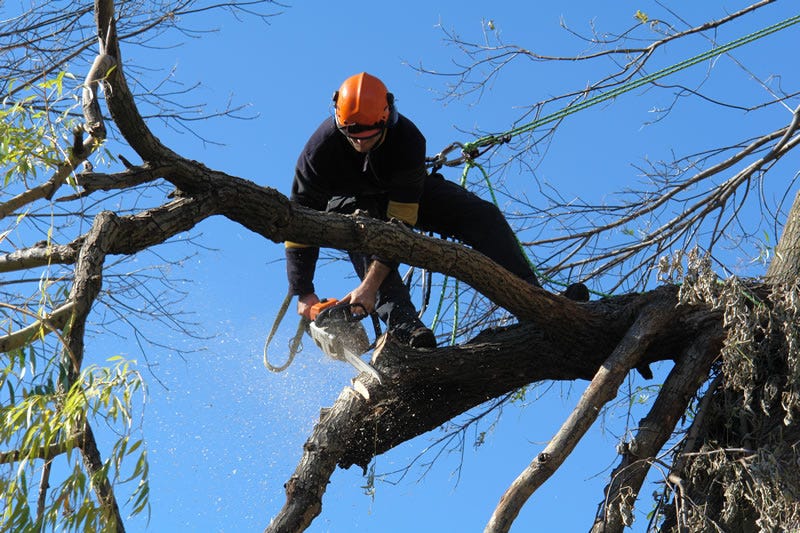
Why Choose Professional Arborists for Your Tree Removal Assessment in Cheltenham?
Certified arborists bring expertise, insurance coverage, and compliance knowledge that protects both your property and investment. Understanding what happens during a professional tree removal assessment in Cheltenham reveals why DIY evaluations fall short.
Professional arborist benefits in Cheltenham extend beyond simple tree inspection:
- Certified qualifications ensure accurate health assessments using industry-standard VTA techniques
- Comprehensive insurance protects you from liability during assessment and removal
- Regulatory knowledge navigates TPOs and conservation area restrictions
- Specialised equipment enables safe, efficient work in challenging locations
- Detailed documentation provides legally sound reports for planning applications
Attempting tree assessment without professional training risks misidentifying structural defects, underestimating safety hazards, or violating local protections. Certified arborists spot subtle warning signs—internal decay, root plate movement, or crown dieback—that untrained eyes miss.
For a trusted tree removal service, contact qualified Cheltenham arborists who prioritise safety, compliance, and transparent communication throughout the assessment process.
FAQs About Professional Tree Removal Assessment in Cheltenham
It’s a thorough evaluation by certified arborists to determine whether a tree needs removal, considering health, structural stability, location, and potential safety risks.
2. Why is a professional assessment important?
It ensures safety, legal compliance with Tree Preservation Orders and conservation regulations, and cost-effectiveness by preventing unnecessary tree removal.
3. How do arborists evaluate tree health?
Through Visual Tree Assessment (VTA) and diagnostic tools like laser measurers, binoculars, sounding hammers, and probes to check structure, bark, foliage, and signs of decay or disease.
4. What safety risks do arborists look for?
They check for weak or dead branches, trunk cavities, cracks or splits, root instability, leaning trees, crown imbalance, and proximity hazards to buildings, power lines, or public areas.
5. How do local regulations affect tree removal?
Cheltenham’s Tree Preservation Orders (TPOs) and conservation area rules require council approval for removal, pruning, or work above certain canopy percentages. Arborists guide compliance and assist with applications.
6. What information is included in the arborist’s report?
The report details species, age, location, dimensions, health evaluation, structural assessment, risk analysis, photographic evidence, regulatory status, recommended actions, and work schedule.
7. How is safety ensured during tree removal?
Certified arborists use exclusion zones, personal protective equipment, communication systems, controlled dismantling, rigging techniques, equipment placement, and emergency plans to prevent accidents.
8. Are there additional services offered?
Yes—stump grinding, site clearance, root barrier installation, soil remediation, and wood chipping are commonly provided alongside tree removal.
9. What alternatives to removal might arborists suggest?
Pruning, crown thinning, selective limb removal, height reduction, or root pruning may preserve tree health while eliminating hazards, depending on the species, age, and structural condition.
10. How are emergency tree assessments handled after storms?
Arborists conduct rapid-response evaluations, secure dangerous areas, assess structural damage, coordinate with utilities, and document conditions for insurance and safety purposes.
11. Why choose a professional arborist in Cheltenham?
They offer certified expertise, insurance coverage, regulatory knowledge, specialized equipment, and detailed documentation—ensuring accurate assessment, safe removal, and legal compliance.

